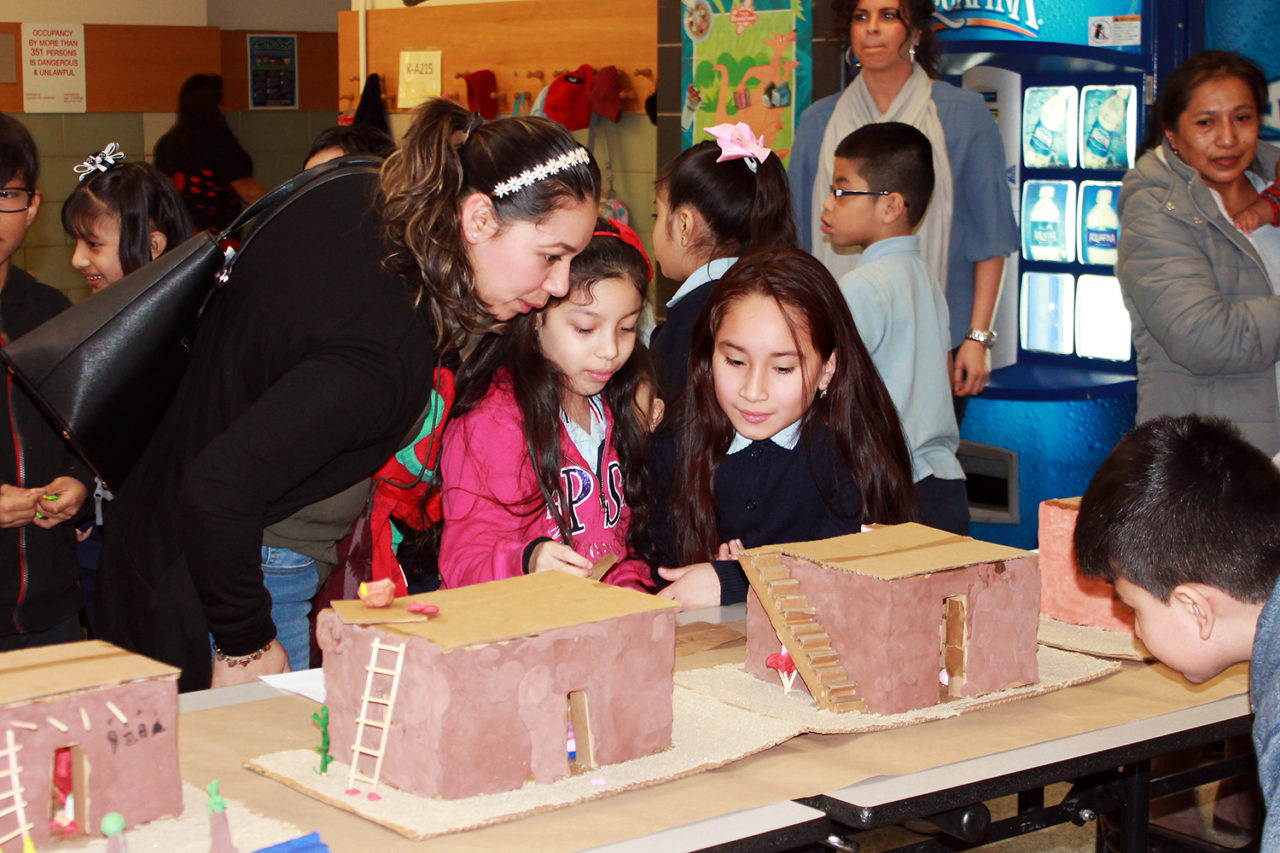by Tim Hayduk
The Center for Architecture K-12 Education Department recently completed an eight-week Learning By Design:NY in-school residency program with six third grade classes at PS 92Q in Corona Queens, exploring the relationship between architecture and climate as a prelude to learning about climate change. Design educators Jessica Castillo and Tim Hayduk were asked by the teachers to develop a project that connected culture, climate, and architecture using the regions students were learning about in their Social Studies curriculum, Communities Around the World: the Athabascan people of the Pacific Northwest, the Uru people of Lake Titicaca, and other indigenous cultures living along the Amazon River in Peru and the Nile River in Egypt.
Students began their study by applying the “form follows function” tenet to a ubiquitous item, hats, examining how they offer protection and comfort from the elements. The discussion then expanded to buildings and how they provide similar protection that is specific to the region that they are built in.
Next, students looked at vernacular buildings from around the world, identifying the climate of various regions and discovering how local materials shape them. Students applied this knowledge to the culture each class was studying in greater depth. Design educators developed a sectional model for the students to build to help them understand the relationship of a building’s interior and exterior and how materials work to keep interiors comfortable despite extreme heat or cold.
An important facet of the residency involved model making with respect to the architectonics of the buildings and their environments. For instance, Athabascan log and sod houses were constructed of rolled corrugated cardboard to make logs replicating the post and lintel framing used to support the heavy sod and snow loads. Egyptian dwellings were built using clay to replicate load-bearing adobe. Totora grass that grows in Lake Titicaca is the staple of the manmade islands, thatched roofs, and walls of the houses that shelter the Uru people. Students employed crinkled kraft paper to simulate Totora grass and burlap to represent walls woven out of the material. An attempt to show the direct relationship between the available materials, climate, and the method of construction was illustrated in each model.
The residency concluded with each class presenting to their peers, parents, and friends. The students worked earnestly and rigorously in making their models realistic, including details that illustrated the lives of the people who built and lived in these sustainable structures.
